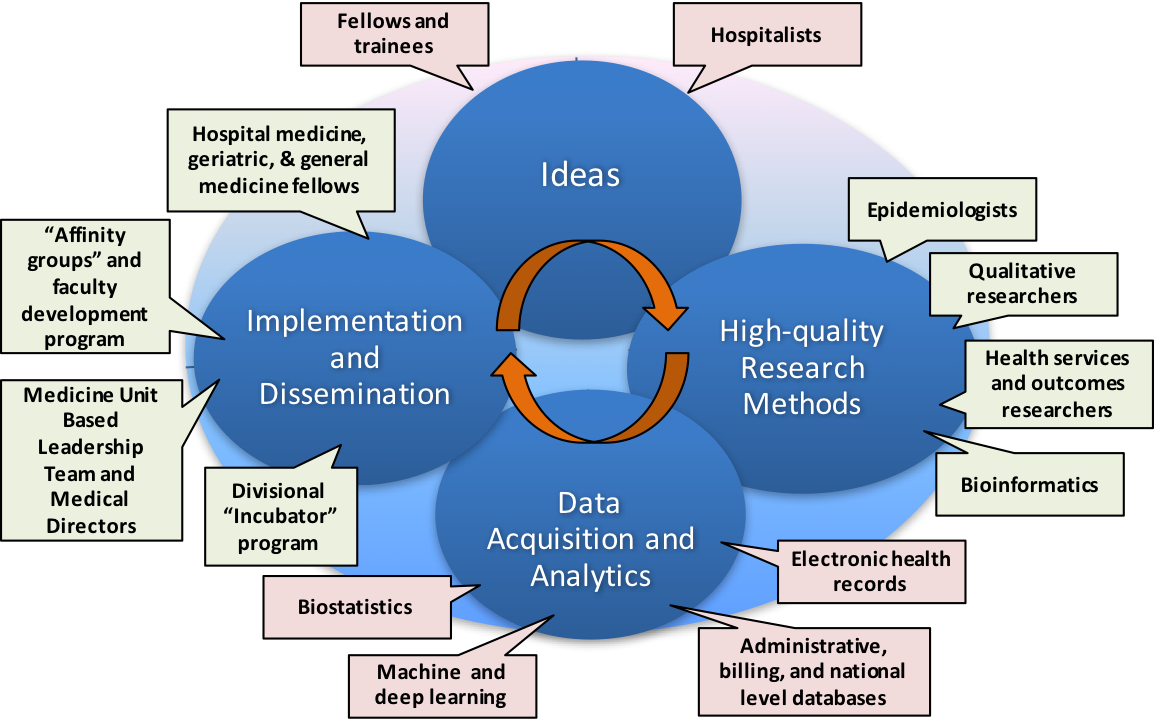Background: Hospital Medicine groups are often called upon to lead initiatives that require access to high-quality data from their local health system. These include quality and value improvement (QI) efforts as well as health services and outcomes research. Although these efforts can be important for clinical operations as well as academic advancement, clear mechanisms to facilitate and support this work are often lacking.
Purpose: To develop and implement a structured and supported system to facilitate the ability of a hospital medicine division to conduct high-quality QI and research projects based on electronic health records (EHR) data in an urban academic teaching hospital.
Description: We conceptualized the essential requirements of a project cycle into four domains [Figure]: (1) Idea generation: where QI or research ideas from faculty, trainees, and staff are submitted into a centralized portal and regularly reviewed by the divisional Research and QI groups; (2) Methods/design consultation: where ideas are then refined through consultancy with experienced methodologists and, when appropriate, assigned a project mentor; (3) Data acquisition/analytics: where relevant EHR data is obtained and analyzed; and (4) Implementation and dissemination: where divisional members can assist in project completion and help prepare abstracts and papers for presentation.
The division supported infrastructure needed to support the project pathway, including supplemental funding for research-oriented faculty to supervise the program and creation of a “Data Core”, staffed by a clinician-informaticist and analyst. There was also broad buy-in from important divisional stakeholder groups, including from the QI Committee, the Faculty Development program, and the Research Core.
Since the formal implementation of the project pathway in January 2017 up through November 2017, there have been 43 separate project ideas submitted through the pathway, resulting in the submission of 9 abstracts to professional society conferences or quality symposiums, 8 intramural grant opportunities, and 2 research manuscripts submitted for publication. In addition, the project pathway provides ongoing data and analytics on 4 divisional QI metrics that cannot otherwise be tracked using other existing administrative or clinical datasets.
Conclusions: The implementation of a project pathway can facilitate the transition from idea generation to project implementation and lead to enhanced availability of high quality data for clinical operations, quality improvement, and academic productivity.

